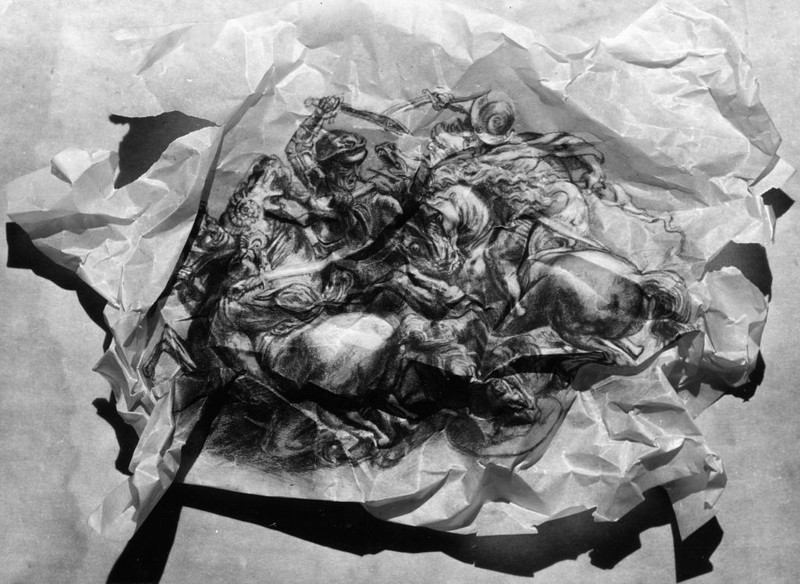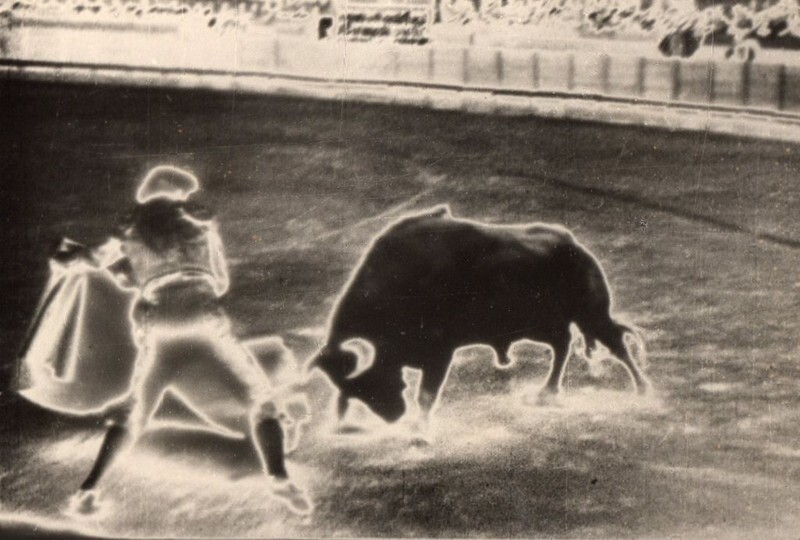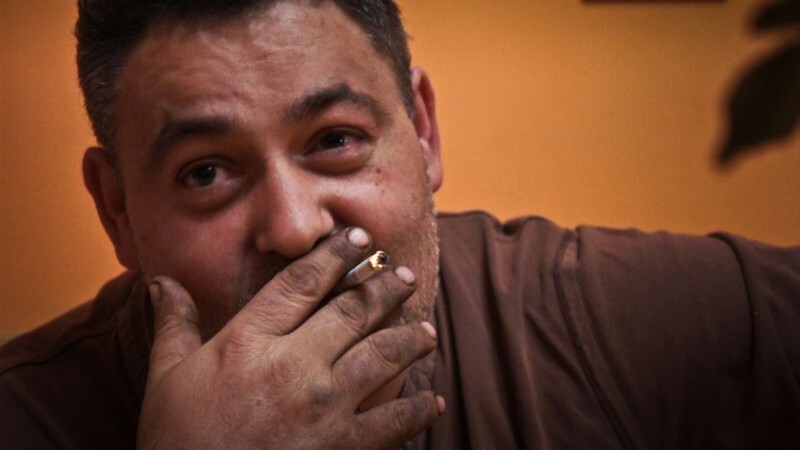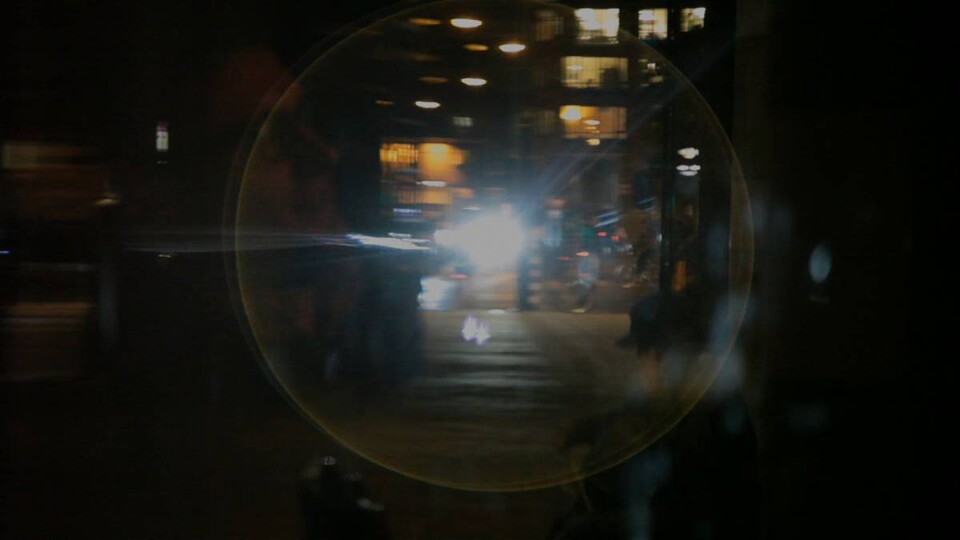Which Art is the Right Kind of Art?
David Čeněk is the dramaturge of three sections of the Jihlava IDFF. He helped the Jihlava IDFF co-discover the magic of films made by French filmmaker with Ukrainian roots Eugène Deslaw. Thanks to cooperation with a French film historian he managed to create a representative selection of Deslaw‘s films that are hidden mostly in French and Spanish film archives. The search for film strips took over a year. The interview also opens themes of anthropological insight into the world of the Tarahumara and muses over the question, what is true art?
What does it mean to you to now be the dramaturge of several thematic sections of the Jihlava IDFF?
The sections which I now dramaturgically prepare, usually require long-term preparation. Some ideas take over a year and half or two years to develop. First you need to find a theme that suits the Jihlava IDFF and also brings something new to the table. Usually, it is about rediscovering forgotten creators or revealing themes that film uses in a new way. After that, a discussion with the Programme Board of the Jihlava IDFF takes place. We discuss the meaning of the section and its range. It is important that the upcoming program always has a broader context. By this I mean, that a guest is present or there is a workshop, in short, that it is not simply just a film screening. Sometimes this embellishment can be featuring the film using the original copy. We do not want the particular section to only be an item in the program.
So how did the idea first come up that one of the sections would be a retrospective of French filmmaker with Ukrainian roots, Eugène Deslaw?
Andrea Slováková was the one who came up with such an idea and I stumbled into the picture by mere coincidence. I knew about some films and I thought that I maybe could have easier access to archived copies. It took a really long time to search for some copies. When conducting a more detailed recherché, we discovered that only a few publications about Deslaw were released and they all were by one author, French historian Lubomir Hosejko, who is in charge of Deslaw’s private archives, so logically he knows a lot about him. Photos from the shoots, diaries, notes and plots can be found in the collection. In addition, Mr. Hosejko conducted archival research and participated in the few retrospectives, which Deslaw’s work garnered worldwide. He was, therefore, able to direct us to places where film copies of his work were likely to be located.
You finally found filmstrips in nearly 20 archives across Europe. Can you describe the circumstances and the detective work that went into such a feat?
We originally contacted dozens of archives. Especially my colleague, Petr Pádivý, figuratively toured all the archives in the world. Some did not respond at all. Some wrote that they did not have any copies from the creator we were after. Consequently, thanks to the tips Mr. Hosejko gave us and our systematic badgering of archives to discover whether they had a copy or not, and if they did, whether they could be borrowed or copied to another medium, we managed to collect a representative selection.
Eugéne Deslaw was a somewhat versatile filmmaker who worked his way up through all sorts of filmmaking professions. Did you stumble upon any problem that his name on many "film pedigrees" provoked?
That is something I gathered only after discussions with Mr. Hosejka and later confirmed in Paris. The certainty of his authorship is somewhat blurred. For example, you can find a film which is credited to Deslaw, but according to the historian we asked, it was never made by Deslaw. The one about the end of the world, which will also be featured at Jihlava IDFF, credits him, but in fact, he only did the editing. Similarly, it is the same case with the movie The Man Who Has Eaten a Bull. This is a film by an anonymous author and Deslaw only directed its audio version. Everything also points towards the idea that Eugéne Deslaw was a storyteller, who deliberately shrouded himself with an aura of half-truths. He often claimed to have worked with some celebrity. But there is no evidence of this and it was Deslaw himself who later negated these assumptions. In addition, where work is concerned, he was supposedly somewhat inconsistent. If he was not involved in something from the beginning, it was difficult to get him to continue working systematically on the project.
In many cases, nothing came from his planned film shootings. Do you think that this inconsistency of his and the inability to see things to an end were the cause of this?
Perhaps, but maybe not always. He was supposed to film in a lot of locations. He even wanted to return to his native Ukraine, which he left with his parents because of the social revolution. He wrote the script and even the storyboards for the project, which supposedly should have been worked on in cooperation with his filmmaker friends, such as filmmaker Alexandr Dovženko. However, these plans were abandoned probably due to political events. Ukraine became independent, later again it was annexed by the Soviet Union and there were a number of political disputes.
Did you search for his films in the Ukraine?
The locations of his films quickly narrowed down only to France and Spain. In addition, despite all of Deslaw’s efforts he probably did not film anything in Ukraine.
How did his films get to Spain?
He also worked as the director of preparation in France and Spain. It means that he was the director in charge of audio versions of foreign films. This is probably how he came to know some of the Czechoslovak filmmakers. While working on dubbing Spanish films, he met with reporters from the film weekly NODO who offered him a chance to produce a feature film. Thus, he went to Spain, where he made Fantastic Vision, where he used a special method of working with film material, so that when projected, the picture looks like a negative.

Leonardo's Diary (Leonardův deník, Jan Švankmajer, 1972)
Which films featured at Jihlava IDFF can we be sure of being Deslaw’s directorial achievements?
Electric Nights, Montparnasse and Fantastic Vision. There were also The March of the Machines and the film Robots, but the first was featured at Jihlava IDFF and the second one mentioned was refused to be given to us by the Belgian film library, although they occasionally lend it to their partner cinemas.
The 19th Jihlava IDFF will also feature a section called Translucent Being Raymonde Carasco which you helped prepare. What was the primary motive for including Raymonde Carasco into this year’s program?
I have been recommending the work of Raymonde Carasco to the Jihlava Program Council for some time now. The decision to feature it in this year’s programme of the Jihlava festival was made at the beginning of the year. The Jihlava festival does not feature films with an anthropological focus. Raymonde Carasco, does have an anthropological foundation in most of her films, but refers rather to philosophy. Several of her movies regarding the life of the Tarahumara try to convey the experience of a foreign culture through its rituals (dance, vocals). The authentic testimony is then combined with commentary from texts of Antonin Artaud, a French avant-gardist and playwright.
Was it just as difficult to find and gather her films?
Absolutely not. Her husband will come to Jihlava and he has all the rights to all of her movies which are stored in the film archive of Toulouse.
After sifting through pages of photos from her films, one does not get a varied representation, since most of the pictures show feet midstride. Is there a deeper meaning to capturing the movement of human lower limbs?
Raymonde Carasco was inspired by a short story by the German writer Wilhelm Jensen titled Gradiva. Gradivus which in Latin means walking. This story interested Sigmund Freud from the perspective of psychoanalysis and he also wrote a detailed analysis of it. In it the main character of an archaeologist falls in love with a vision of a walking woman who visits him in dreams. However, the motif of a walking woman and bewitchment interested Raymonde Carasco. Also the word "Tarahumara" when loosely translated means "the people who walk". And it is these Tarahumara people, with whom Carasco spent several years, who in reality have many traditions associated with walking. In one of their rituals, they run all night long. Raymonde Carasco, bewitched by the Tarahumara, wanted to create a film that would introduce their outlook on life and philosophy via their movement.
Raymonde Carrasco wrote a dissertation on Sergei Eisenstein and his famous concept of film production. How could it have affected her work?
Eisenstein’s influence can be seen in the deliberate rhythm of her film production. In addition, her films are narrative, and therefore cannot be described as anthropological. She is not interested in describing individual rituals, but rather seeks to convey the intangible, immaterial things. She shows what fatigue, the mood and work looks like. She immerses herself in the community. She does so by moving and the contact of a foot with the surface - with a path, with water. It really is a visualized idea.
The other section of the Jihlava IDFF to which you are dramaturgically linked is dedicated to surrealist films. However, the film selection lacks perhaps the most famous surrealist film, the work of Buñuel, An Andalusian Dog. How is this possible?
A group of Czech surrealists took over the patronage of this section and they claim that An Andalusian Dog is not a surrealist film. The second reason lies in the concept of the whole section. It is not a historical retrospective but thematic insights on this art direction via its documentary aspects. And An Andalusian Dog simply is not primarily a documentary. The Seashell and the Clergyman is an example of a narrative piece with a surrealist theme, but the followers of this direction booed it at the premiere. Although the piece The Imitation of Cinema is equivalent in form to An Andalusian Dog, even its name suggests that in essence the film is an imitation of reality.
Can we even consider a film that surrealists do not accept as their own, as surrealist?
It depends on the interpretation. If we start from a historical perspective and define what a surrealist film is, then we can consider The Seashell and the Clergyman by Germain Dulac to be the first film of surrealism. If we notice that most of the surrealists do not take the movie for one of their own, then neither can we regard it as one either. But our program is not about deciding what is and what is not surreal. Our intention is to provoke discussion. In addition, surrealism is a phenomenon in art, but generally it is said that there are very few surrealist films. Then the Czech group of surrealists takes their pick and suddenly you can see a lot of examples of surrealist films. This is what captures the essence of our section dedicated to Surrealism.
You say that the surrealists take issue with The Seashell and the Clergyman. Have you noticed any type of a conflict when compiling the selection for the section?
Of course not among the Czech surrealists. It's all about the historical interpretation.
As a dramaturge, you have worked with this year’s Summer Film School. In what ways does the approach of Jihlava IDFF differ in regard to film sections or the visitors?
The Jihlava festival tries to communicate with its audience a lot through meetings, discussions, festival journal, blog, website and so on. Overall, it tries to listen to the feedback of the audience, whether it's positive or negative. But at the same time, it tries to explain the power and meaning behind their selection or new sections, some which may even be repeated regularly. In the beginning, Jihlava IDFF was very uncompromising when it came to the decision to show documentary films that completely deviate from what we traditionally understand by the term documentary. Jihlava IDFF educated their audience. The Summer Film School does not want to feature films that the programmers think too incomprehensible for their audience. Whereas Jihlava IDFF’s approach is: this movie is very interesting and key from some point of view. Let's give the audience a chance to understand it! I believe that the difference is quite palpable. The SFS is a passive entertaining summer festival, where visitors come to relax. Jihlava IDFF brings art to the table and in contact with the film it enters political and social life in an active way.
So it comes down to some kind of a dialog between the audience member and festival?
Of course. Nobody is able to say what kind of art is the right kind of art. Therefore, we offer something that is always partially based on subjective taste. We cannot definitely say this is art and this is not. There has to be dialogue between the script writer and the piece of work, the programmer and the audience and, of course, the featured piece has to communicate with the audience. If all points of this imaginary triangle are in mutual symbiosis, the festival can be worthwhile and mainly meaningful.



